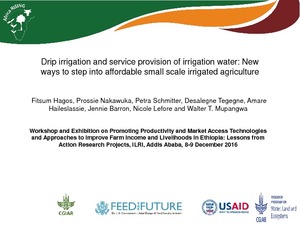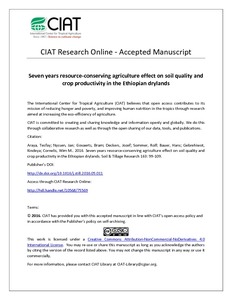Location
US Postal address:
C.I.P./Mexico/ AP # 370
P.O. Box 60326
Houston TX 77205 U.S
CIMMYT works throughout the developing world to improve livelihoods and foster more productive, sustainable maize and wheat farming. Our portfolio squarely targets critical challenges, including food insecurity and malnutrition, climate change and environmental degradation.
Through collaborative research, partnerships, and training, the center helps to build and strengthen a new generation of national agricultural research and extension services in maize- and wheat-growing nations. As a member of the CGIAR System composed of 15 agricultural research centers, CIMMYT leads the CGIAR Research Programs on Maize and Wheat, which align and add value to the efforts of more than 500 partners.
Turning research into impact
- By conservative estimates, this work provides at least $2 billion in annual benefits to farmers.
- CIMMYT alumni include a Nobel Peace Prize laureate and three World Food Prize winners.
- CIMMYT’s success depends on the longstanding partnerships and trust of public agricultural research systems, private companies, advanced research institutes and academia, and non-governmental and farmer organizations.
- More than 70 percent of the wheat grown in developing countries and more than 50 percent of improved maize varieties derive from CIMMYT breeding materials.
- More than 10,000 scientists have trained at CIMMYT and gone on to become leaders in their own countries. The center empowers thousands of students, extension workers and farmers through courses, workshops and field days.
Members:
Resources
Displaying 6 - 10 of 38Evaluation of suitable water lifting and on-farm water management technologies for the irrigation of vegetables and fodder in Lemo district, Ethiopia
Crop residue allocation to livestock feed, soil improvement and other uses along a productivity gradient in Eastern Africa
Crop residues are a key livelihood resource in smallholder mixed crop-livestock systems in Sub-Saharan Africa. With expansion of arable land and resultant decline in grazing resources, crop residues are becoming an increasingly important component of livestock feeds. This demand for livestock feeds has implications for the long-term sustainability of such systems since failure to return biomass to soils has implications for soil quality and the capacity of soils to support long-term productivity.
Seven years resource-conserving agriculture effect on soil quality and crop productivity in the Ethiopian drylands
Economic benefits of climate-smart agricultural practices to smallholder farmers in the Indo-Gangetic Plains of India
Small landholders can implement a range of climatesmart agricultural (CSA) practices and technologies, in order to minimize the adverse effects of climate change and variability, but their adoption largely depends on economic benefits associated with the practices. To demonstrate the potential economic benefits of CSA practices, we conducted a study with smallholder farmers in the Indo-Gangetic Plains (IGP) of India.






